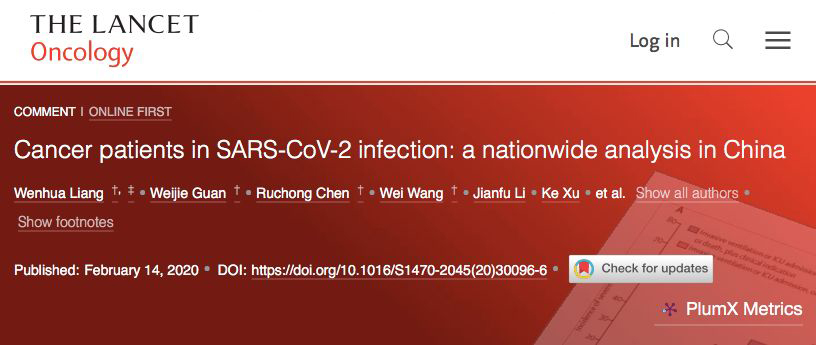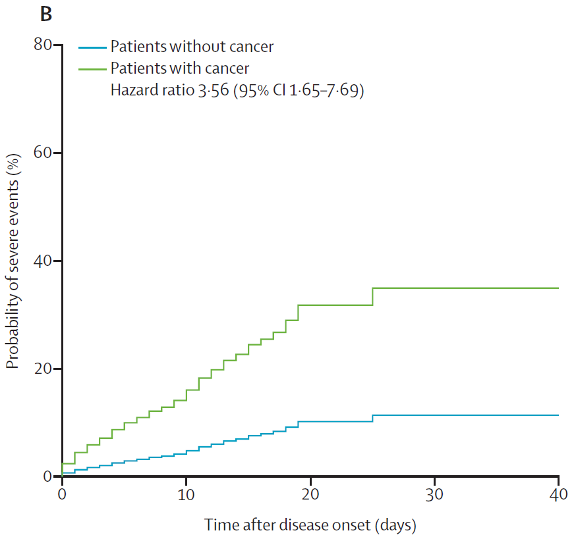The research team led by Professor He Jianxing of the SKLRD discovers for the first time that cancer patients are more susceptible to COVID-19 and poorer in prognosis
2020-02-191036In December 2019, a series of acute respiratory tract diseases occurred in Wuhan, Hubei, which are now known as COVID-19. The disease has spread from Wuhan to other regions quickly. On February 14, 2020, the team of He Jianxing of Guangzhou Medical University published a review with the title of “Cancer patients in SARS-CoV-2 infection: a nationwide analysis in China” online in the international top journal Lancet Oncology in the field of cancer.

Contrary to the SARS and MERS, the multiple organ dysfunction syndrome rather than respiratory failure caused by COVID-19 has caused more deaths, which may be attributed to the wide distribution of angiotensin converting enzyme 2. Due to the systematic immunosuppression state caused by the malignant tumors and anti-cancer treatment (such as chemotherapy or surgery), cancer patients may be more susceptible than non-cancer patients. Therefore, these patients may have a higher risk to catch COVID-19 and poorer in prognosis.

The review has established a prospective cohort to monitor the COVID-19 cases across China. By January 31, 2020, researchers had collected and analyzed the cases of 575 hospitals in 31 provincial-level administrative regions. All cases were confirmed as COVID-19 and hospitalized. Due to the insufficient records of previous medical history, the researchers had excluded 417 cases. Among the 1,590 COVID-19 cases, 18 were recorded with a history of cancer, which seemed to be higher than the cancer incidence rate of the whole Chinese population (the nationwide proportion is 0.29%). Lung cancer is the commonest type (five among the 18 patients 28%). Of the 16 COVID-19 cancer patients, four (25%) received chemotherapy or surgery in the past month. Compared with patients without cancer, the patients with cancer were older (average age 63.1 years vs 48.7 years), more likely to have a smoking history (4 in 18 cases 22% vs 107 in 1,572 cases 7%), with multiple dyspnea (47% vs 23%), and a worse CT result (94% vs 71%). However, they have shown no distinctive difference in terms of gender, other symptoms, and the seriousness of other complications. Most importantly, compared with cancer patients, it has been observed that the risk is higher that a serious incident occurs to the cancer patients.
















